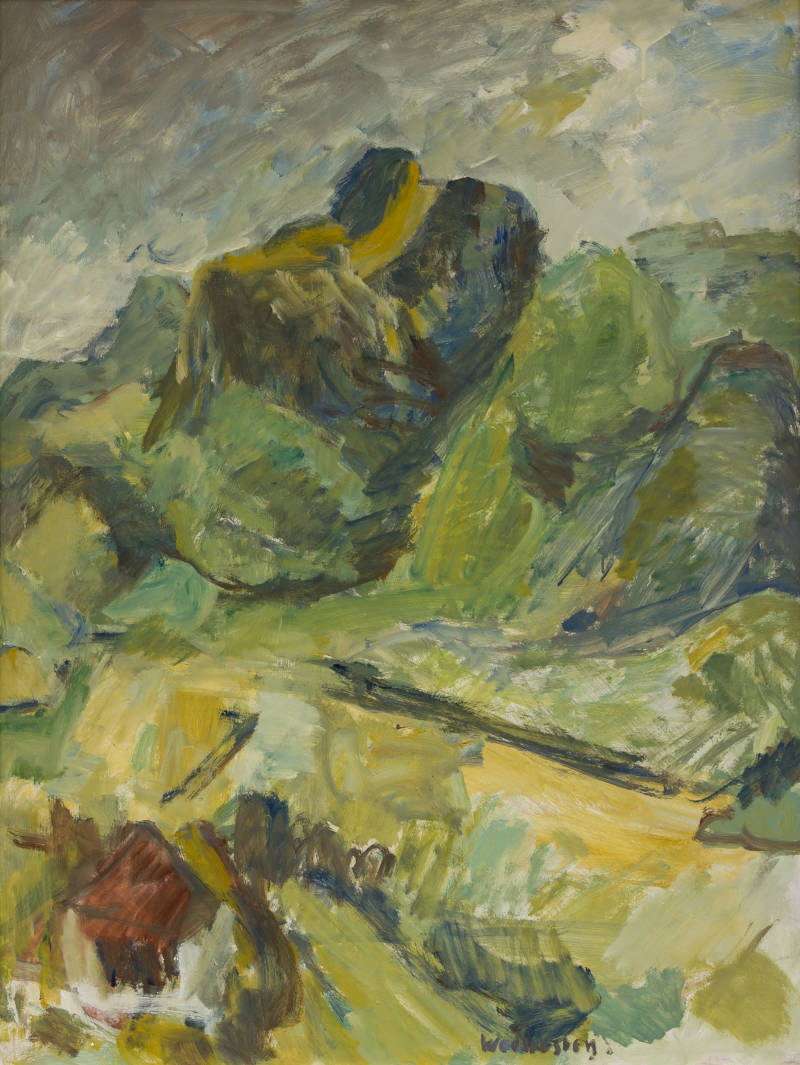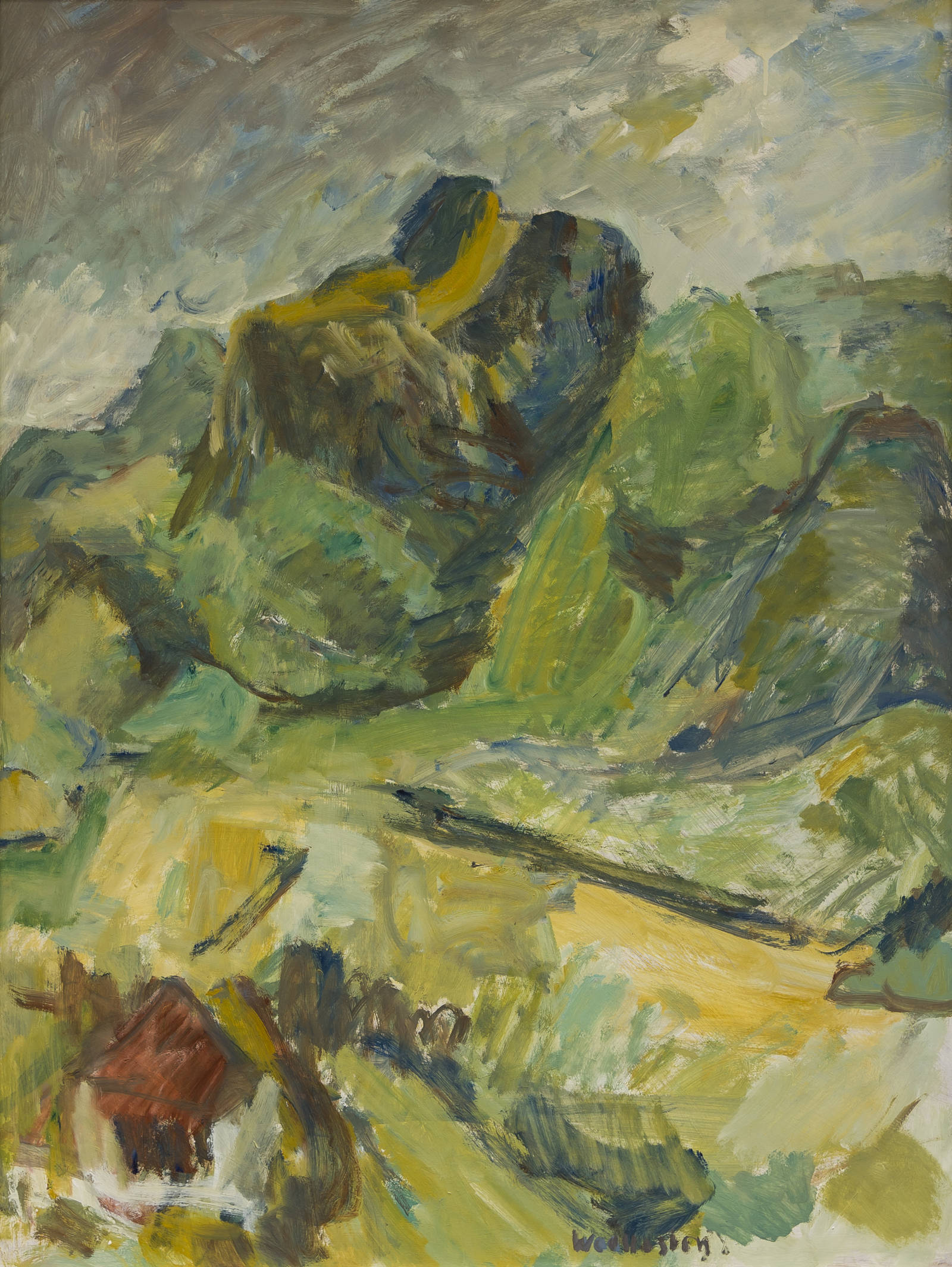WOOLLASTON, Toss;
Bayly’s Hill
c.1967
Oil on board
1200 x 900mm

In 1962, Toss Woollaston visited Europe and the United States of America, experiencing first-hand major works by artists he had long admired, including El Greco, Diego Velázquez, Francisco Goya, J. W. M. Turner, Claude Monet, and, most importantly, Paul Cézanne. Following his return to Aotearoa, he painted with enthusiasm, with the resulting works being marked by great confidence.
From his base in Māwhera Greymouth, he made trips to his childhood home of Taranaki. His father lived in a house with a view of Bayly’s Hill, and this became an important motif in Woollaston’s work. Gerald Barnett has commented:
‘While the Bayly’s Hill paintings retain occasional baroque flourishes, recalling the West Coast landscapes, Woollaston tended to curb his rhythms as he sought greater monumentality in his motif. In many of the works the hill crowds the picture plane almost oppressively, assuming an emblematic quality reminiscent of Cézanne’s paintings of Mont Sainte-Victoire.’[1]
In 1966, art dealer Peter McLeavey offered to represent Woollaston. McLeavey’s support, and that of Barry Lett in Tāmaki Makaurau, encouraged the artist to paint full-time. In 1968, Peter McLeavey Gallery opened in Cuba Street, Te Whanganui-a-Tara, with an exhibition of Woollaston’s Bayly’s Hill works. That same year, Woollaston and his wife, Edith, moved to Riwaka, where they had built a house with a spacious studio. Te Tai o Aorere Tasman Bay would be the artist’s home for the rest of his life.
[1] Gerald Barnett, Toss Woollaston (Tāmaki Makaurau: Random Century; Te Whanganui-a-Tara: National Art Gallery, 1991), 83.
Inscriptions
Woollaston [l.r.] WOOLLASTON ; 67/178 / BAYLY'S HILL $210-00 [label verso]Exhibition History
Representation and Reaction: Modernism and the New Zealand Landscape Tradition 1956–1977, Sarjeant Gallery Te Whare o Rehua, Whanganui, 31 August to 27 October 2002 (toured)

